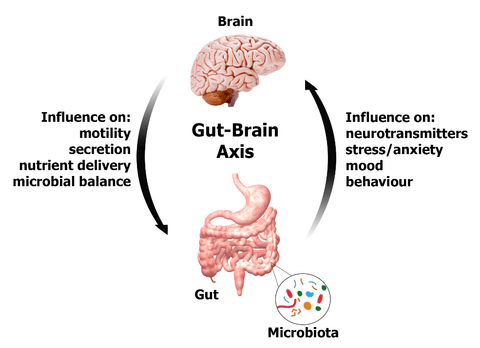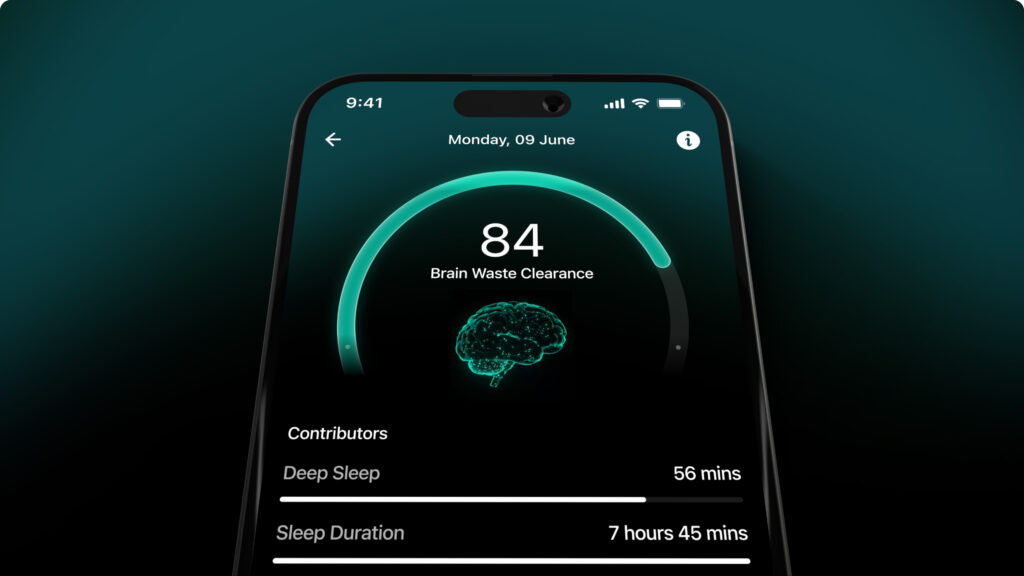Have you ever felt a ’gut-wrenching’ experience? Do certain situations end up making you ’feel nauseous’? Have you felt “butterflies” in your stomach?
We use these expressions for a reason.
The gastrointestinal tract is sensitive to emotions like anger, anxiety, sadness, and elation all of these feelings (and others) can trigger symptoms in the gut.
Highlights
- The gut-brain axis (GBA) is a link between the central nervous system (CNS) and the enteric nervous system (ENS) of the body. It includes direct and indirect pathways between cognitive and emotional centres within the brain with peripheral intestinal functions,
- Gut-brain studies have revealed a complex communication system that ensures the proper maintenance of gastrointestinal homeostasis, but is also likely to have multiple effects, including motivation and higher cognitive functions,
- Exercise may lead to a bidirectional relationship between the gut and brain through alterations in the microbiome. This relationship may explain why exercise can be a therapeutic factor and strategy for both psychological and gastrointestinal disorders.
The Gut-Brain Axis (GBA)
The gut-brain axis (GBA) is a link between the central nervous system (CNS) and the enteric nervous system (ENS) of the body. It includes direct and indirect pathways between cognitive and emotional centers within the brain with peripheral intestinal functions.
The GBA involves a complex exchange between the endocrine (hypothalamic-pituitary-adrenal axis), immune (cytokine and chemokines), and autonomic nervous system (ANS).
Gut-brain studies have revealed a complex communication system that ensures the proper maintenance of gastrointestinal homeostasis, but it is also too likely to have multiple effects, including motivation and higher cognitive functions.
GBA’s role is to monitor and integrate gut functions as well as to link emotional and cognitive centers of the brain with peripheral intestinal functions and mechanisms such as activation of the immune system, intestinal permeability, enteric reflex and entero-endocrine signalling.
The GBA primarily combines the sympathetic and parasympathetic arms of the autonomic nervous system (ANS), which operate both afferent and efferent neural signals between the gut and the brain, respectively.
The neuro Immuno endocrine mediators of the GBA allow the brain to control intestinal function (immune cells, epithelial cells, enteric neurons, and smooth muscle cells).
The cells of the gastrointestinal (GI) tract are also under the impact of the gut microbiota and recent evidence suggests that the microbiome plays an important role in the GBA structure.
These connections coordinate and control the secretions, motility, mucosal transport and blood flow of the gastrointestinal tract that directly influence gut microbiota composition and also digestion of your foods.
The CNS and ENS work synergistically to communicate information via neurotransmitters in a bidirectional manner between the gut and brain.
When the brain recognizes poor external factors like stress, it releases chemicals that stimulate the gut-brain to divert blood flow away from the gastrointestinal tract and toward organs that are crucial for survival (i.e., away from the trunk). When digestion is interrupted, the gut-brain communicates distress to the brain. Consequences include perturbations to mood, digestion and general gut health.
Mindful eating may reduce stress to establish an environment that enhances the digestive capacity.
Sources of stress can be
- Physical (e.g. sleep deprivation, extreme exertion),
- Chemical (e.g. pesticides, pollutants),
- Mental (e.g. anxiety, worry, long work hours),
- Emotional (e.g. anger, fear, sadness) and
- Nutritional (e.g. food allergies, micronutrient deficiencies).
The Gut-Brain Link
At birth, a newborn is first exposed to the mother’s vaginal microbiota, which influences the offspring’s microbiome.
Various studies show that the development and maturation of the human CNS and ENS are highly influenced by gut microbiota in early postnatal weeks. The interaction between the gastrointestinal mucosal lining and the gut microbiome also helps in developing the immune system.
Most of the research into the brain-gut–microbiota axis was conducted on germ-free animals and studying the effect of antibiotics, probiotics and faecal transplants to determine their effects on the gut microbiota and on brain activity.
Many of these studies conclude that the gut microbiota produces relevant levels of neurotransmitters and is, in part, responsible for many facets of health and disease.

The microbes of the gut microbiome interact with the Gut-Brain Axis through the following pathways.
1. The vagus nerve:The neurons carry feedback from the intestinal end to the brain stem which in turn engages the hypothalamus and limbic system (which is responsible for the regulation of emotions). Similarly, projections from the limbic system (activated via stress) influence the autonomic activity of the gut.
2.Neuroendocrine (gut hormone) signalling:Bacterial products are known to stimulate enteroendocrine cells to produce neuropeptides that enter the bloodstream and/or directly influence the enteric nervous system.
3.Interference with tryptophan metabolism:Around 95% of serotonin is produced by gut mucosa. It is involved in the regulation of GI secretion, motility (smooth muscle contraction and relaxation), and pain perception, whereas in the brain serotonin is implicated in regulating mood and cognition. Gut microbiota also aids in tryptophan metabolism which is the precursor to the production of serotonin.
4.The immune system:The gut-associated lymphoid tissue comprises 70% of the body’s immune system and can be viewed as the largest immune organ in the body.
5.Altered intestinal permeability:Chronic stress has been shown to affect intestinal permeability (leaky gut syndrome), which is associated with a low-grade inflammation that can be operationally linked to psychiatric disorders such as depression. In many of these cases, it is the increased presence of circulating bacterial endotoxins which are fundamental risk factors for various diseases.
Other studies have suggested that the gut microbiota can produce neuroactive substances that may influence the crucial symptoms of neuropsychiatric disorders. This hypothesis could signify a relevant role of gut microbiota in the pathophysiology of many disorders, including schizophrenia, autism, anxiety and depression.
6.Production of microbial metabolites:Many species of beneficial bacteria Lactobacillus and Bifidobacterium produce gamma-aminobutyric acid (GABA), which is the main inhibitory neurotransmitter in the brain. Candida, Escherichia, and Enterococcus species produce the neurotransmitter serotonin, while some Bacillus species have been shown to produce dopamine.
Bacteria also produce short-chain fatty acids (SCFAs), such as butyric acid, propionic acid and acetic acid, that are able to up-regulate the sympathetic nervous system, mucosal serotonin release and thus influence the memory and learning process inside the brain.
Exercise may lead to a bidirectional relationship between the gut and brain through alterations in the microbiome. This relationship may explain why exercise can be a therapeutic factor and strategy for both psychological and GI disorders.
The main identified phyla that respond to exercise are Firmicutes and Actinobacteria, which contain the Lactobacillus and Bifidobacterium species, respectively.
In addition, the short-chain fatty acid-producing genera also appear to increase in response to exercise. Further research is undergoing to understand the mechanisms of how specifically exercise influences the microbiome, and the mediators involved in the gut-brain axis.
This may lead to the development of various treatment combinations that includes exercise plus probiotics to mitigate (or improve) specific disease states.
References
- Feldman M., (2017) Gut-brain Axis : From: Translational Bioinformatics and Systems Biology Methods for Personalized Medicine.
- Carabotti, M., Scirocco, A., Maselli, M. A., & Severi, C. (2015) The gut-brain axis: interactions between enteric microbiota, central and enteric nervous systems. Annals of gastroenterology, 28(2), 203–209.
- Appleton J. (2018) The Gut-Brain Axis: Influence of Microbiota on Mood and Mental Health. Integrative medicine (Encinitas, Calif.), 17(4), 28–32.
- Foster, J., Rinaman, L. & Cryan, J. (2017) Stress and the gut-brain axis: Regulation by the microbiome. Neurobiology of Stress. 7: 124-136.
- Clark, A., & Mach, N. (2016) Exercise-induced stress behavior, gut-microbiota-brain axis and diet: a systematic review for athletes. Journal of the International Society of Sports Nutrition, 13: 43.








